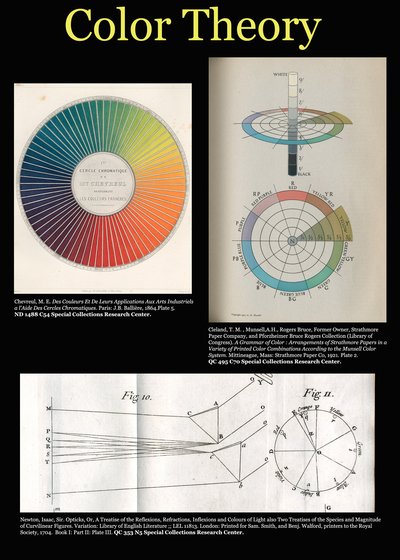Color Theory
The ancient theory of color which carried through the Renaissance, was that all colors were mixtures of darkness and light—black and white. Aristotle, for instance, held that dark crimson comes from the mixture of black with sunlight or firelight. It was Isaac Newton who first fully developed a theory of color based on a color wheel. Newton had split white light into a spectrum by means of a prism and then wrapped the resulting spectrum around on itself to create the color wheel. This led the way to the now common notion of red, yellow, and blue as primary colors.
What constitutes a primary color was, however disputed. Johann Wolfgang von Goethe held that yellow ad blue were primary. Newton and Goethe took very different approaches in their study of color. For Newton, color theory was something to be scientifically derived from experimentation in a lab. Goethe, on the other hand, took a more experiential and physiological approach. That the theory of primaries was so disputed came in part from the disconnect between theory and the reality of natural pigments which often formed muddied colors when mixed. The advent of synthetic colors which could closer approximate simple primaries, spurred a new interest among artists in the use of the color wheel for mixing a palette. At the same time, industrialization created a focus not just on color theory but on standardization of color and color naming.

